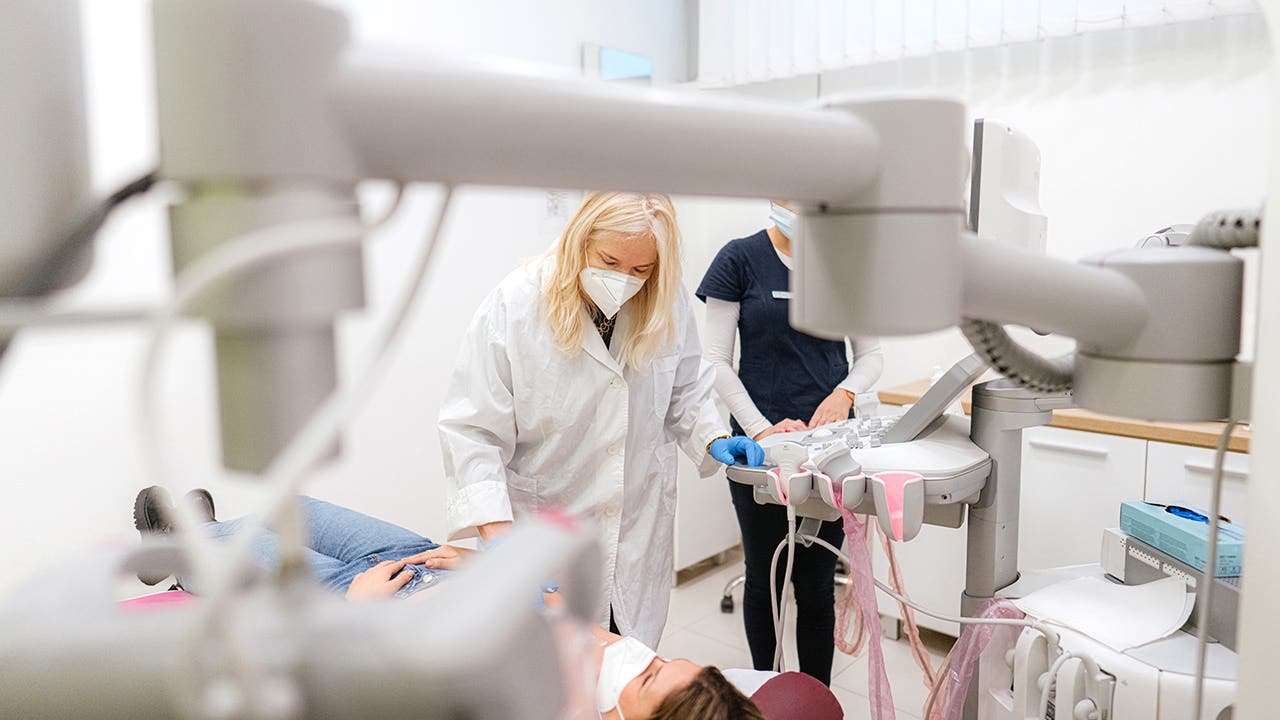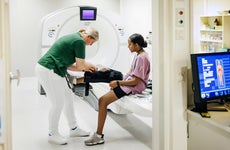How I survived breast cancer and covered the costs

The Bankrate promise
At Bankrate we strive to help you make smarter financial decisions. While we adhere to strict , this post may contain references to products from our partners. Here's an explanation for . The content on this page is accurate as of the posting date; however, some of the offers mentioned may have expired. Terms apply to the offers listed on this page. Any opinions, analyses, reviews or recommendations expressed in this article are those of the author’s alone, and have not been reviewed, approved or otherwise endorsed by any card issuer.
October is Breast Cancer Awareness month. While many people are aware of the warning signs associated with breast cancer and the importance of regular mammograms, not everyone is aware of how much breast cancer can cost.
A recent Bankrate analysis on the average cost of breast cancer revealed that breast cancer care could cost as much as $200,000 without insurance. Even if you have health insurance, you may have to pay 10 to 15 percent of those total medical bills. That’s $20,000 to $30,000 you weren’t expecting to lose.
Fortunately, there are ways to reduce the cost of breast cancer, like applying for financial assistance, setting up a hospital payment plan or pursuing alternative funding. Using a credit card won’t reduce the cost, but it can offer relief in the form of a temporary zero-interest period or cash back. The bottom line is you have options, and the best plan might involve a combination of payment methods.
That’s what Anna Crollman learned as she began her breast cancer journey. Crollman, who was diagnosed with Stage IIB triple-positive breast cancer when she was 27, is now a seven-year breast cancer survivor. She offers advice, mental health tips and breast cancer resources at My Cancer Chic, and was generous enough to share her story with Bankrate as well.
Cancer’s cost
When Crollman was diagnosed with breast cancer in 2015, she and her husband had already built up their savings. However, they were still forced to alter the life they had planned.
“My husband and I had significant savings prior to cancer,” Crollman explains. “We were planning to start a family and had hoped for me to be able to stay home a year.”
Even with their family-planning money turned into a medical emergency fund, Crollman and her husband found themselves in need of financial assistance. They took advantage of payment plans for medical bills through their hospital, and grants from nonprofits serving cancer patients.
Many nonprofits offer financial support and cost-saving resources to people with breast cancer, including the American Cancer Society and the Susan G. Komen Foundation. Depending on where you live, you may also be able to access state or local resources to help cover expenses.
Should you use a credit card?
Crollman is familiar with the benefits of rewards credit cards. “We love our American Express credit cards and our Bank of America business cards, because of the rewards,” says Crollman.
Those rewards came in handy when Crollman and her husband were dealing with medical costs. “We used credit cards to cover the deductible costs and medical co-pays, as well as our monthly payment plan to the hospital,” Crollman says. “And we took advantage of the rewards we earned on our American Express cards.”
If you’re looking for the best credit card to help you cover health care costs, start with Bankrate’s list of the best credit cards for medical expenses. You’ll find credit cards with elevated rewards rates for medical expenses, as well as 0 percent introductory APR offers, which can help you avoid interest charges for a year or more.
“Utilizing 0 percent interest credit options is a great way to cut down on out-of-pocket expenses during cancer,” says Crollman.
How to avoid credit card debt during cancer treatment
Credit cards can help you through your cancer journey, but they can also make a bad situation worse.
“Don’t be afraid to use credit as needed,” Crollman says. “But be sure to pay off your balance monthly or you can quickly spiral into credit card debt.”
If you’re not sure about being able to pay off your balance before it starts accumulating interest, it’s probably better to avoid credit cards. Instead, you could pursue a payment plan with the hospital or a personal loan, which may have a much lower interest rate than a credit card.
If you already have debt
Say you already charged your medical expenses to a credit card and are having a hard time keeping up with payments. It might be time to consider a balance transfer credit card. The best balance transfer cards offer between 12 and 21 months of 0 percent APR on transferred balances, giving you time to pay off your debt without dealing with new interest charges.
You may also want to contact your credit card issuers and ask about hardship programs. Most major credit card companies have resources available for people experiencing difficult financial circumstances. You may be able to reduce your minimum payment, lower your interest rate or apply for credit card forbearance.
The bottom line
It’s been over seven years since Crollman received her breast cancer diagnosis. Today, Crollman is not only a breast cancer survivor but also the mother of a toddler. She’s also ready to share what she’s learned with others, no matter where they are on their cancer journey.
If you’re considering using credit cards to pay for cancer treatments, keep Crollman’s advice in mind. Avoid interest by using a 0 percent introductory offer or paying off as much of your balance as possible every month, and look for credit cards with cash back rewards. Consider negotiating a lower balance or a payment plan with your hospital. The best plan might involve a combination of several payment methods.
“I am confident with how we managed our credit and savings,” says Crollman. Surviving breast cancer is hard enough. Follow Crollman’s lead, and make sure you don’t end up with a financial crisis on top of it.
Related Articles



